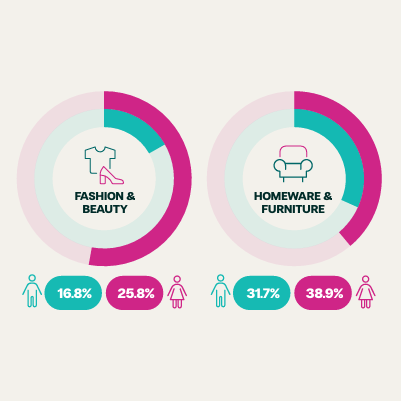Four challenges of cross-border sales with checkout finance (UK & EU)

The checkout finance market is crowded, yet cross-border sales with checkout finance is largely untapped. Why?
Well, it’s complicated. Navigating defaults, credit risks and technical integrations is a challenge domestically. Add in regional laws, cultural differences and language barriers, and cross-border checkout finance becomes a complex proposition. One that most providers steer clear of, at the cost of multinational merchants and their customers. But with a retail market worth $3.55 trillion dollars in Europe alone, it cannot be ignored.
In this article, we take a look at four challenges of cross-border checkout finance to providers, the issues merchants face without it, and a potential solution to it all.
What are the challenges of cross-border checkout finance?
1. Regulatory compliance
Regulations differ from country to country. Even in the EU – which is currently loosely regulated by a Consumer Credit Directive – governments have varying degrees of consumer protections. This makes cross-border retail finance complex.
Providers need to understand that there are differences in regulations across markets. They need a thorough understanding of the law in every territory they operate in to be compliant. Non-compliance is expensive and risky, as is the cost of pulling out of the market. Most providers avoid it.
2. Credit risk
Risk scoring varies from country to country. The UK has a similar system to the US and Canada, wherein three major credit reference agencies keep a score of on time payments (positive points) and defaults (negative points) to assess one’s credit worthiness. But in Spain and the Netherlands, credit histories are made up solely by negative marks. And in France, there’s no such thing as a credit reference agency.
Understanding credit-worthiness across borders can therefore be challenging. Unregulated Buy Now, Pay Later (BNPL) providers often use internal credit worthiness checks and soft-searches to avoid defaults. But it’s a challenge to say the least.
3. Cultural differences
Attitudes to credit also vary significantly. According to Statista, Sweden had the highest penetration of Buy Now, Pay Later, a form of checkout finance, in 2021 at 25%. But just next door in Denmark, penetration is less than half (12%). And if you head further west, penetration drops to 9% in the Netherlands and 4% in France.
Then there’s language, currency, and other nuances which make it difficult to repeat go-to-market strategies in neighbouring countries. As providers are essentially launching different products in every market they enter, a global approach does not work. Local knowledge is key, but difficult to come by unless you work with partners on the ground, or tap into a global network.
4. Technical integration
This is a big one. Providers must be able to connect seamlessly to the merchants payments systems, regardless of the location. Plugins like Shopify and Magenta simplify this process. But what if the merchant has unique requirements?
Providers need to fully understand what their client needs and create it for them swiftly. And then need to do this in languages that may not be native.
What does this mean for merchants?
UK lenders don’t lend in Europe, and European lenders don’t lend in the UK. Given the complexity of offering cross-border checkout finance, you can understand why. But it’s merchants and their customers who lose out.
UK and European merchants who do business, or have aspirations to do business, on both sides of the channel need to onboard multiple checkout finance providers. This is complicated and costly.
Due diligence
Merchants need to find a new provider for every market they operate in. They need to vet that provider, their products and how they treat their customers. Do they lend in my market? Is my annual revenue high enough to be accepted as a merchant? Are they reputable? What’s their collections process like?
Technical integration
Then there’s the technical integration. Do they offer bespoke integrations? If so, how long will it take? When can I realistically start offering finance?
Small print
You’ve then got to negotiate the commercials to understand how much you’ll be charged, term lengths, and whether there’s a cost to consumers.
Internal preparation
Once that’s wrapped and ready to go, it’s time to train your teams and promote your finance offering. Your website will need updating for every provider in every market and language. If you have physical stores, you’ll need to educate your sales staff on the nuances of your offering and teach them how best to sell it. You’ll have to allow time for the solution to embed, and you’ll probably need to make adjustments if you’re not hitting the numbers.
And, most importantly, you’ll need to do this every time you onboard or change lenders.
Merchants often have small technical teams with an already heavy workload. Each additional provider adds complexity to the backend which means more maintenance and more work. More work means the team needs to expand which means more effort for the merchant and bigger costs. In every country, in every language.
Sounds exhausting, right?
What’s the solution?
A platform that connects merchants with lenders in the UK and Europe via a single integration.
Divido is launching a new multi-market product to help large UK merchants expand into Europe, and European merchants to expand into the UK.
We make it easy to embed finance payment options at points of sale. Only one integration is needed, so merchants save months of engineering work and can enter new countries – Belgium, France, Italy, Spain, Portugal, Romania and the UK – faster.
Our network of Tier One lenders includes some of the most recognisable and reputable names in UK and European finance. With deep sector knowledge and 40+ years of experience, acceptance rates are maximised and growth is guaranteed. Merchants can always access the right lenders to grow their business.
It doesn’t matter where customers begin their purchase, as long as there’s a screen then you can add finance options. Our API lets merchants create almost any journey, online and in-store.
Merchants retain full control over how their brand and messaging across all points of sale. To make promotions bold to clear stock, or experiment to boost sales. All with full ownership of customer relationships and data.
Want to learn more about the benefits of Buy Now, Pay Later?
Divido’s latest white paper offers never-before-seen insights into the world of checkout finance. Understand how and why customers are flocking to this form of payment, with real statistics backed up by our survey of British consumers.
Download your free copy here:
Keen to know more?









